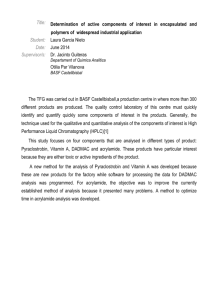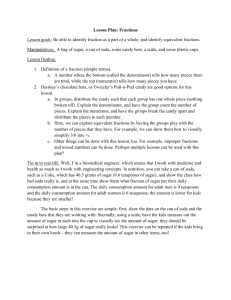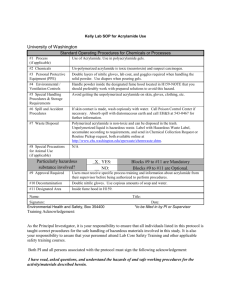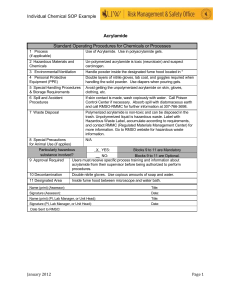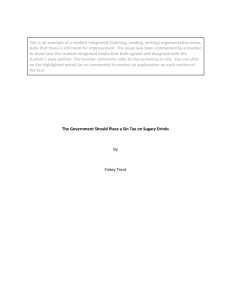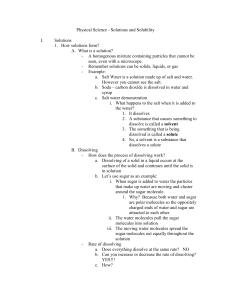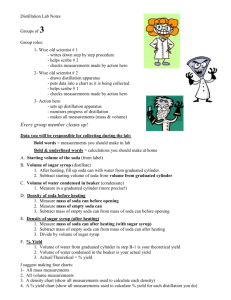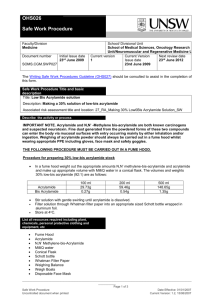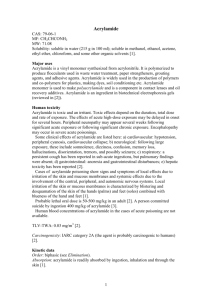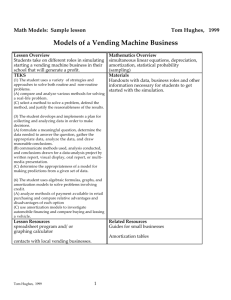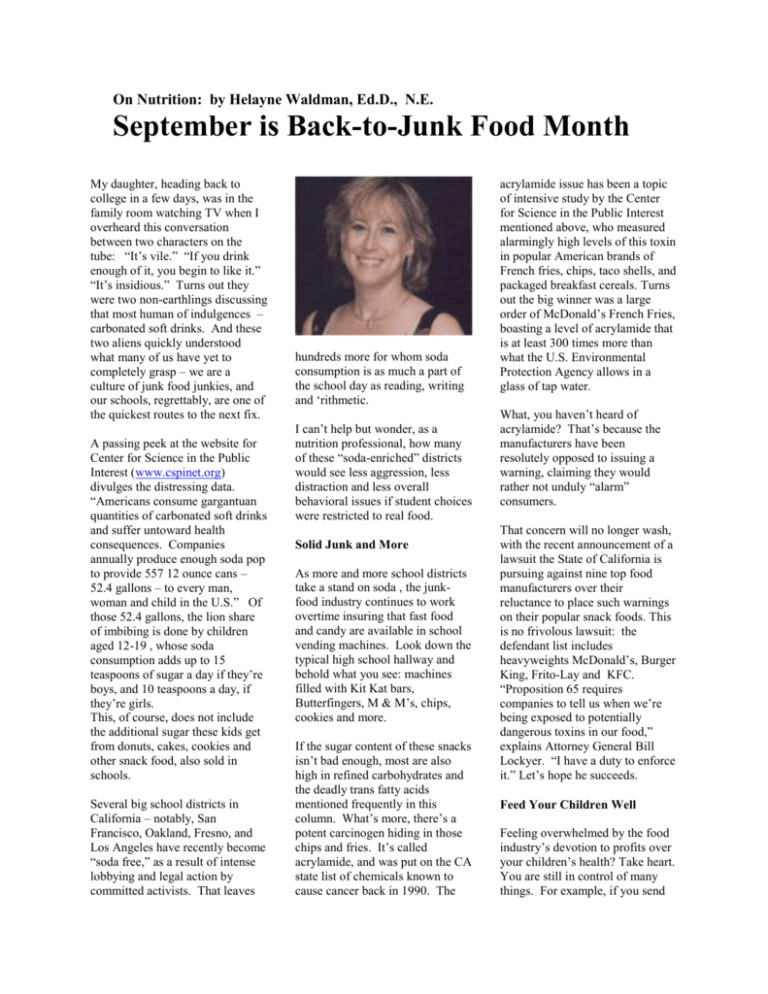
On Nutrition: by Helayne Waldman, Ed.D., N.E.
September is Back-to-Junk Food Month
My daughter, heading back to
college in a few days, was in the
family room watching TV when I
overheard this conversation
between two characters on the
tube: “It’s vile.” “If you drink
enough of it, you begin to like it.”
“It’s insidious.” Turns out they
were two non-earthlings discussing
that most human of indulgences –
carbonated soft drinks. And these
two aliens quickly understood
what many of us have yet to
completely grasp – we are a
culture of junk food junkies, and
our schools, regrettably, are one of
the quickest routes to the next fix.
A passing peek at the website for
Center for Science in the Public
Interest (www.cspinet.org)
divulges the distressing data.
“Americans consume gargantuan
quantities of carbonated soft drinks
and suffer untoward health
consequences. Companies
annually produce enough soda pop
to provide 557 12 ounce cans –
52.4 gallons – to every man,
woman and child in the U.S.” Of
those 52.4 gallons, the lion share
of imbibing is done by children
aged 12-19 , whose soda
consumption adds up to 15
teaspoons of sugar a day if they’re
boys, and 10 teaspoons a day, if
they’re girls.
This, of course, does not include
the additional sugar these kids get
from donuts, cakes, cookies and
other snack food, also sold in
schools.
Several big school districts in
California – notably, San
Francisco, Oakland, Fresno, and
Los Angeles have recently become
“soda free,” as a result of intense
lobbying and legal action by
committed activists. That leaves
hundreds more for whom soda
consumption is as much a part of
the school day as reading, writing
and ‘rithmetic.
I can’t help but wonder, as a
nutrition professional, how many
of these “soda-enriched” districts
would see less aggression, less
distraction and less overall
behavioral issues if student choices
were restricted to real food.
Solid Junk and More
As more and more school districts
take a stand on soda , the junkfood industry continues to work
overtime insuring that fast food
and candy are available in school
vending machines. Look down the
typical high school hallway and
behold what you see: machines
filled with Kit Kat bars,
Butterfingers, M & M’s, chips,
cookies and more.
If the sugar content of these snacks
isn’t bad enough, most are also
high in refined carbohydrates and
the deadly trans fatty acids
mentioned frequently in this
column. What’s more, there’s a
potent carcinogen hiding in those
chips and fries. It’s called
acrylamide, and was put on the CA
state list of chemicals known to
cause cancer back in 1990. The
acrylamide issue has been a topic
of intensive study by the Center
for Science in the Public Interest
mentioned above, who measured
alarmingly high levels of this toxin
in popular American brands of
French fries, chips, taco shells, and
packaged breakfast cereals. Turns
out the big winner was a large
order of McDonald’s French Fries,
boasting a level of acrylamide that
is at least 300 times more than
what the U.S. Environmental
Protection Agency allows in a
glass of tap water.
What, you haven’t heard of
acrylamide? That’s because the
manufacturers have been
resolutely opposed to issuing a
warning, claiming they would
rather not unduly “alarm”
consumers.
That concern will no longer wash,
with the recent announcement of a
lawsuit the State of California is
pursuing against nine top food
manufacturers over their
reluctance to place such warnings
on their popular snack foods. This
is no frivolous lawsuit: the
defendant list includes
heavyweights McDonald’s, Burger
King, Frito-Lay and KFC.
“Proposition 65 requires
companies to tell us when we’re
being exposed to potentially
dangerous toxins in our food,”
explains Attorney General Bill
Lockyer. “I have a duty to enforce
it.” Let’s hope he succeeds.
Feed Your Children Well
Feeling overwhelmed by the food
industry’s devotion to profits over
your children’s health? Take heart.
You are still in control of many
things. For example, if you send
your children off to school well
fed, they will be less tempted to
purchase toxic snacks and sodas.
Give them a high protein
breakfast, or start them off with
complex carbohydrates and high
quality fats. This will stabilize
their blood sugar and keep their
tummies satisfied for several
hours. Eggs and/or multi grain
toast with butter will do the job.
Pack delicious; filling snacks for
them such as fresh fruit, their
favorite cut veggies, pistachio
nuts, almonds, or walnuts.
Personally, I carry around a
sugarless whey protein bar, coated
with dark chocolate to satisfy my
appetite and my sweet tooth.
Many kids, my own included, like
the idea of having their own water
bottle to sip on throughout the day.
You might try adding some fruit
juice for taste, so that you wind up
with a 50/50 mix. Having a
refreshment close at hand will
temper the impulse buying many
kids experience as they breeze by
the coke machine.
Talk to your children about the
dangers of junk food. It may take
many conversations over a long
period, but eventually they do get
the message. Have patience.
Most of all, remember that you are
the primary role model for your
children when it comes to eating
habits. If you yourself forsake
healthful, nutrient dense meals for
sugar-laden snacks and sweets,
you are sending a message that it is
okay to abuse your body and
jeopardize your future well being
by consuming garbage. Your
children will follow suit.
____________________________
Helayne Waldman, Ed.D , N.E.,. is
a health and nutrition educator, a
writer, and an Adjunct Professor
in the Dept. of Holistic Health
Studies at JFK University. She
can be reached at
hwaldman@turning-thetables.com, or on the web at
www.turning-the-tables.com
©2005-2006 Helayne Waldman, Ed.D., N.E.. All rights reserved.

